Lippit
I want to begin by thanking you for agreeing to sit for this interview. It’s perhaps worth noting that this interview is destined, at least in the first instance, for a Japanese audience. There has been a vibrant interest in your films and written work in Japan, where you have recently spent some time, so perhaps we can touch upon those experiences and your reception there a little later.
It is in some ways an extremely difficult task to approach you for an interview. The conventions of this medium assume some notion of a constant or discernable identity, an interviewee whose essential features are either already known or can be known. In the case of Trinh T. Minh-ha, one recognises a filmmaker and a scholar, but also an artist of many shades, a perpetual traveler, and a person whose own history in the world is marked by the epistemic shifts that characterise this century and its thought. Looking back on the various interviews collected in Framer Framed, I’m struck by the sheer diversity of subjects that you speak of, but also by the sometimes anxious ways in which the interviewer tries, at times, to situate you within established traditions of experimental filmmaking, the critique of anthropology and conventional documentary, ethnography, poetics, post-colonial thought, feminist thought and activity and so forth. I’ll try to resist the temptation to identify, as it were, a fixed dwelling and try instead to follow the nomadic qualities of your expansive work.
Since many of your previous interviews speak to your cultural politics and positions vis-à-vis the subject of alterity, I thought we might approach this conversation from the vantage of your films, which represent, in my opinion, absolutely discrete and distinct pieces of work, which are nonetheless bound by a very particular spirit or desire. So, perhaps to begin with this notion of a project, how do you define your film project—if you accept the notion of a project—and how does your film work fit into your broader artistic and intellectual projects?
Trinh
When I work on a film, I am drawn very intensely to the world of images and sounds. On a basic level, such a state of creative availability and of active receptivity is in itself a “project.” But the making of a film also opens up many doors to other means of creativity. It sharpens the edge between, let’s say, writing for a book and writing for a film—a difference one constantly faces when words are part of the film fabric. Not only does the use of language differ markedly from one medium to another, but working with storytelling, poetry and everyday speech in cinema also makes me aware of music in ways I never thought of before. If a poem is an invisible painting, as Chinese artists put it, then a film can be all at once visible poetry, musical painting and pictorial music. The spaces between image, sound and text remain spaces of generative multiplicity, in which the function of each is not to serve nor to rule over the other, but to expose, in their tight interactions, each other’s limit. What I cannot avoid experiencing at certain moments of the process is both the different strengths and limits of these tools of creativity. So it is in working constantly with these limits and with the circumstances that define them that I advance, quite blindly, actually. Even though in discussions, it does seem as if all my projects are very lucidly thought out, this comes in the making process, not before it. Most of the time I jump into a project blindly, and this is how boundaries are also displaced.
Lippit
So you see the production of a film as something that opens up a space for writing, thinking, and learning, even as you are creating the work itself?
Trinh
Yes, very strongly. There’s a whole web of activities involved in and triggered by the making of cinematic images. I have no such thing as a preconceived idea that I want to visualise or illustrate through film. It doesn’t happen that way; it’s more likely through an encounter—with a person, with a group of people, with an event, or with a current of energy that is sparked by a specific situation.
Lippit
Your body of films suggests a certain consistency, an idea not of any totality, but of a shared quality. When thinking in the abstract about your films, they seem to offer a shape, to have and take shape, yet when one looks at the films individually, they are in many ways radically different. There persists, however, a common desire or spirit that motivates them. One motif that appears strongly in all your work involves an aesthetic or politics of travel. Another is the notion of encounter and portraiture. A portraiture that is not always of people or places but sometimes of relations to places, producing a sense in which the viewer finds herself or himself the subject of a portrait—as if the spectator is being watched.
I am interested in this dual sense of absolutely discrete projects with completely separate foci and emphases on the one hand, and the persistence of a communal space that works in your films on the other. I have noticed that interviewers often try to identify you within very specific communities and it seems impossible to do so. There is, it seems, something fundamentally nomadic about your work both in its geographical momentum but also in its intellectual or creative capacity to wander, as it were, and move—
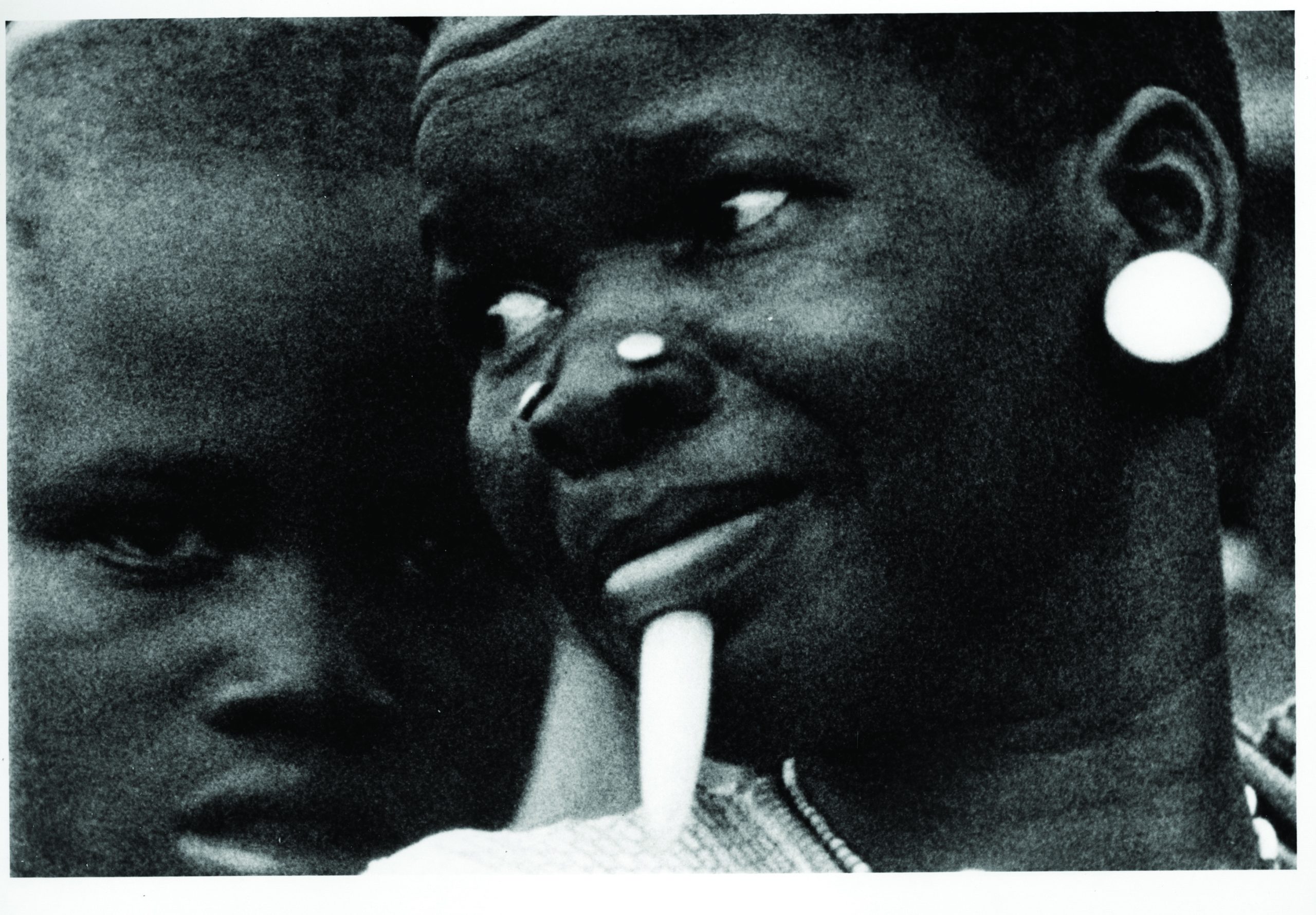
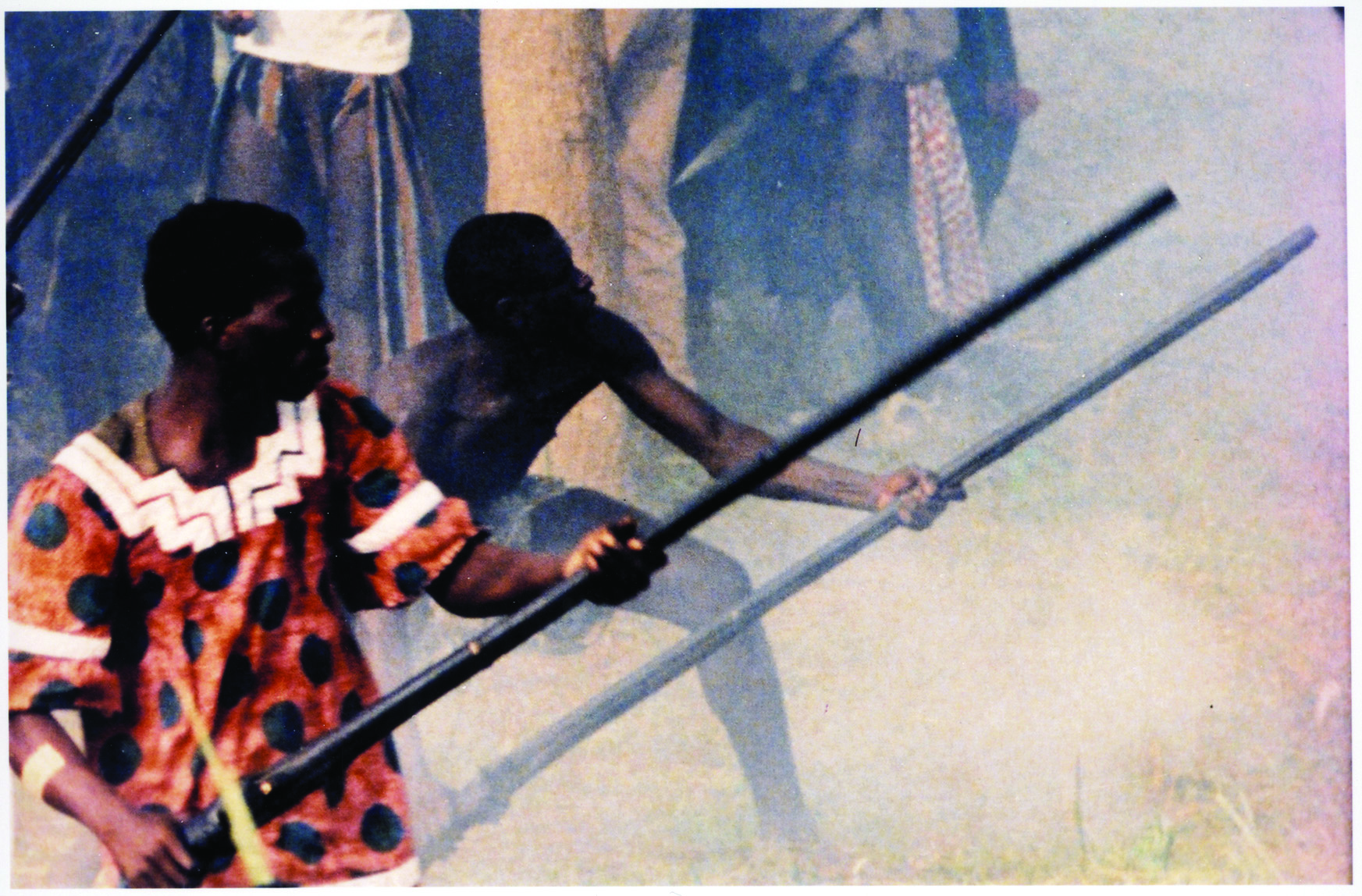
1, 2 Stills from Naked Spaces by Trinh T. Minh-ha, Courtesy Moongift Films.
Trinh
Perhaps something that seems recognisable in my work and can only be realised intuitively with each film, is this tendency in pushing the limits, to lead the work, just when its structure emerges, to the very edge where its potential to return to nothing also becomes tangible. Whatever takes shape does not do so simply in order to address form. In that sense, nothing really takes shape. By going towards things while letting them come to me in the mutually transformative process of filmmaking, I am not merely “giving form.” Taking shape is not a moment of arrival, and the question is not that of bringing something vague into visibility. Rather, the coming into shape is always a way to address the fact that there is no shape. Form is here an instance of formlessness, and vice-versa.
So when you talk about this sense of traveling, of wandering, and of not fitting comfortably in one group, it’s not so much something that constitutes an agenda on my part as something rather intuitive that corresponds to the way I live, to the skills of survival I’ve had to develop, and to my own sense of identity. I’m not at all interested in giving form to the formless, which is often what many creators reach for. Rather, I’m taken in by the creative process through which the form attained acutely speaks to the fragile and infinite reality of the world of forms—or, of living and dying.
How to incorporate that sense of the infinite in film is most exciting, even though we know that we always need a beginning and an ending, and that making a film is already to stop the flow or to offer a form. But rather than reaching a point of completion where form closes down on form, a closure can act simultaneously as an opening when it addresses the impossibility of framing reality in its subtle mobility. This is certainly one way of looking at what happens with all of my films.
The other aspect which you mentioned, which I love very much, is that, yes, there is a tendency to see the two films I shot in Africa as being alike and sometimes they are even scheduled to be screened one after the other in the same program slot. This is a terrible mistake, for Reassemblage and Naked Spaces need to be viewed as far apart from one another as possible, if the spectator’s creative and critical ability is to be solicited. Such a programming decision, detrimental to the reception of the films, tells us how people continue to see films predominantly in terms of subject matter. Yet how the two films are realised and how they physically affect the viewer are radically different. As I mentioned earlier, each encounter is so utterly bound to the elements that define it, that for me, it is impossible to reproduce, identically, what has been made at different moments of one’s itinerary, and with different peoples, circumstances and locations. The specificity of each encounter would dictate a different move for each film. In other words, each film has its own . . . field of energies.
Lippit
Yes, a vitality. It is surprising to think of Reassemblage and Naked Spaces as similar films. Do you feel that sometimes because the subject matter can be so powerful in your work that it interferes or disrupts other elements in the work? The subject matter you select is often very powerful.
Trinh
I’m very glad it comes out that way for you. There’s always a tendency to think that because I don’t come into a project with an idea in mind or with a preconceived political agenda, the content is of little account, which is not at all the case. I feel very strongly about the subject matter of each of the films—again, not as something that precedes but something that comes with the making of these films. In fact, people bewildered by the freedom with which my films are structured often react by saying, “Well then this film could have been made anywhere.” And I would have to say “No,” because each film generates its own bodyscape—as related to specific places, movements, events and peoples—which cannot be reproduced elsewhere.
But yes, I would agree that if the subject matter comes out strongly, then what we call structure, form, or even process, become less noticeable. Not because they are in any way less important, but because when everything clicks together in a film, it’s no longer possible to speak of form and content as separate entities. This reminds me of the other dimension, which you touched on earlier, namely, that the subject who films is always caught in the process of relating—or of making and re-presenting—and is not to be found outside that process. All of my films are actually attempts to bring out that process with and within the image. Because of the very tight “always-in-relation-to” situation, it is also difficult to simply indulge in the subject matter, as if it pre-exists out there, waiting to be retrieved “as it is.” There should always be some kind of a split somewhere that compels the viewer to pull out of the illusory screen space where subject matter tends to take over film reality.
Lippit
In watching your films again recently, but also following from what you have just spoken of, I am interested in your sense of framing. It has a peculiar tendency, although different from film to film, to make the familiar look unfamiliar, even peculiar and unknown. I am thinking especially of Reassemblage, where one looks at images that are part of a cultural vocabulary and yet the look of that film is so absolutely distinct that one begins to notice the very consistent but subtle sense of framing. Perhaps that also relates to your earlier comments about edges and borders. The framing doesn’t operate according to conventions, to the demands of balance or symmetry. Could you speak of your ideas regarding framing?
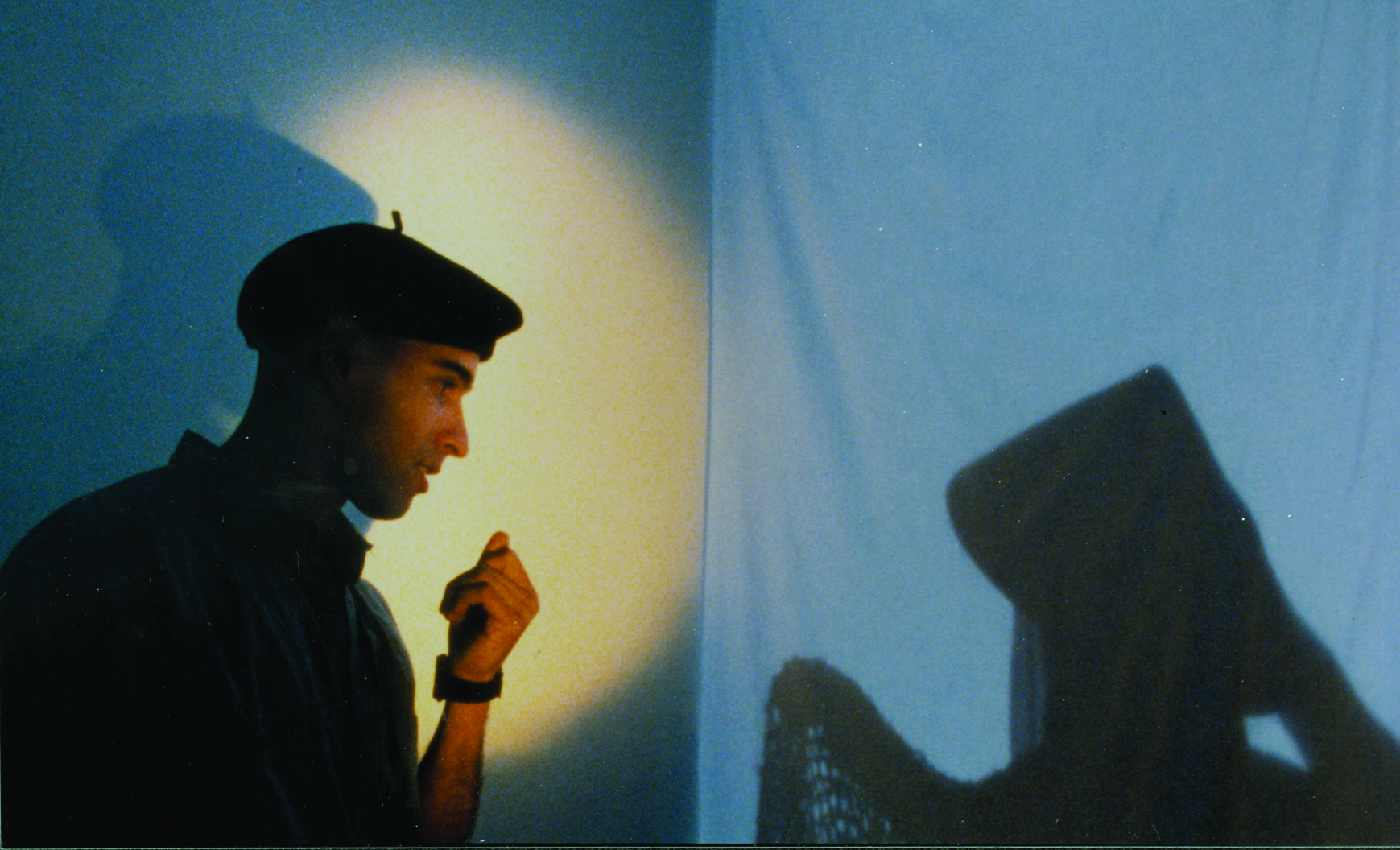
3 Still from A Tale of Love by Trinh T. Minh-ha and Jean-Paul Bourdier, Courtesy Moongift Films.
Trinh
Yes, actually we can go in many directions with this because it reminds me that when Reassemblage was first released, there were often, unavoidably, a couple of viewers in the audience at each screening who either praised the film or got very upset because they related it to a National Geographic product. Even today, I still occasionally encounter those kinds of response, whether in the U.S., in Europe or in Asia. And of course, there have also been instances where there is someone in the room who works for National Geographic who immediately says, “We would never accept such a film.”
Sometimes the mere fact that the subject matter is located in rural contexts or in remote parts of the non-Western world (what the Japanese film milieu commonly calls “ethnic films”), and the fact that, in addition, the images are bright and colourful, with no immediately definable or recognisable political agenda attached, are sufficient for some viewers to attribute the film’s look to the more familiar one of National Geographic images. I once said in response to a similar, aggressively voiced reaction that, ah yes, for some people all reds look alike, and that for them there’s no difference between the red of a rose, the red of a ruby and the red of a flag; nor is there any difference within the reds of blood flowing unseen in life and of blood spilled out conspicuously in death.
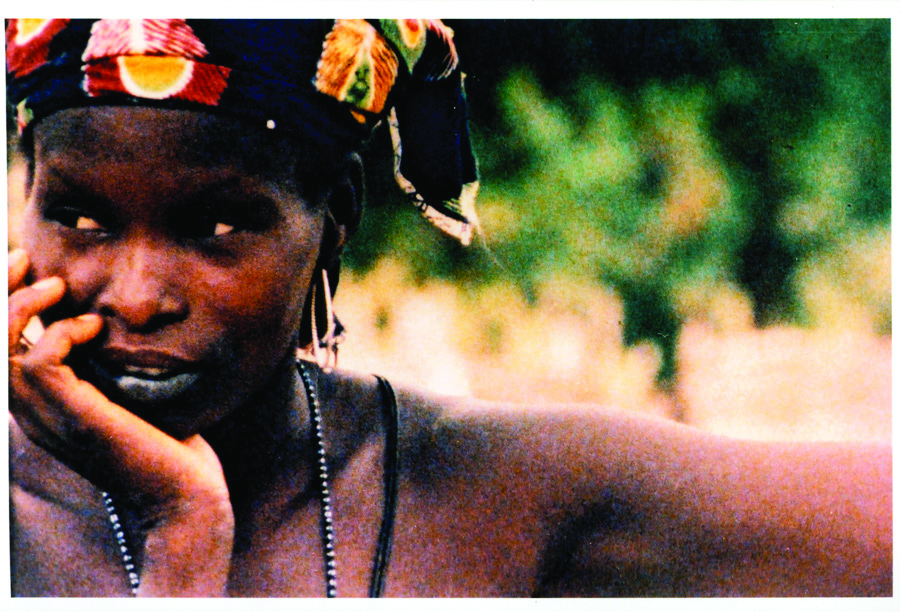

4, 5 Stills from Naked Spaces by Trinh T. Minh-h, Courtesy Moongift Films.
Trinh
Fortunately, a number of viewers do come to acknowledge on their own that what they first thought of as a National Geographic-type film does work on them, as the film advances, in such a way as to leave them ultimately perplexed and troubled. Days and even weeks after, they say, their perceptions of the film continue subtly to expand and to open onto unexpected views and directions. For me, this is largely due to a process of shooting and framing in which, as I mentioned earlier, the filming subject and the filming tools are always caught in the subject filmed. I don’t mind it when viewers in Europe link my films to those of Johan Van der Keuken, who is known as one of those truly “mad about framing.” I am not so much concerned here with composition, but as you’ve noted, I’m sensitive to the borders, edges and margins of an image—not only in terms of its rectangular confines, which today’s digital technology easily modifies, but in the wider sense of framing as an intrinsic activity of image-making and of relation-forming. Working with Jean-Paul Bourdier, who is an architect, has incited me to see in terms of space so as to decide where to put the camera and how to move with it. This is quite prominent in A Tale of Love, for example. While Reassemblage and a large part of Naked Spaces were shot intuitively with the camera placed very close to ground level, where most daily activities are carried out in African villages. Such a decision has an important impact on the image, but the frame itself is very intimately created while I am shooting.
Most of the time, if a good cinematographer sees an interesting subject and wants to use a pan, for example, she rehearses the gesture until the movement effected from one object to another is impeccable in its precision and certainty. In my case, I usually shoot with no forepractice and often with only one eye—the kino-eye, as Vertov called it. I may at times shoot the same subject more than once, but well, the first time always turns out to be the best, because when one repeats the gesture one becomes sure of oneself, which is what most cinematographers value—the sureness and smoothness of the gesture. But what I value is the hesitation or whatever happens when I first encounter what I am seeing through the camera lens. So the way one looks becomes totally unpredictable. Like wearing blinders and not seeing where one is going, the camera just moves with you according to the pace of your own body, or the pace of your camera pan. It is this attentive half-blindness that interests me. Rather than merely conforming to the ideal of seeing with both eyes while shooting—one inside, the other outside the lens and the frame so as to foresee one’s moves—I largely confine myself in the films I’ve shot to the eye that only sees reality via the camera. There is, in the look that goes toward things while letting things come to it unplanned, no desire to capture per se. You start a move and then simply continue it to see what comes into that framing in time and space.
Now there are films where I’ve worked with a cameraperson because I had to do more directing. Here, it is difficult to talk about one approach, because mine is necessarily mediated by the camera operator. In Surname Viet Given Name Nam, in the interview scenes of Shoot for the Contents, and especially in A Tale of Love where fiction intensifies framing, the sureness of the cinematographer’s hand is inevitable. But I value that element as well, when it doesn’t come from me. For it is then simply another element that contributes to the experience of film as an activity of production. Non-knowingness is an attitude, not a technique to perform. What is specific to the cinematographer also has a place, and even if that cinematographer does not decide on the framing, the gesture, rhythm and sureness developed are hers. Treating these as her contribution to the process also means that one necessarily creates a different space for the film. What you have is something, let’s say, between the open-ended process of the filmmaker and the skilled expertise of the operator.
Lippit
The images are beautiful in your films, strikingly beautiful—much more so than in National Geographic—and that may be an effect precisely of what you have described. Your description of the process of filmmaking for you suggests something more on the order of the sublime. Rather positing mastery over her medium, her subject matter, the filmmaker here loses herself in the process of making a film. It’s very different from the more popular notion of the filmmaker as a master of one’s craft, of one’s subject, of one’s space. Your description of the first gesture, the first movement as the one that you regularly prefer suggests a kind of dissipation or a loss of the self in the act of filmmaking. And the result can be a very beautiful image that emerges from the encounter with that dissipation, rather than from the assertion of one’s mastery in the form of a pan, or tilt, or some kind of practiced gesture.
Trinh
What you’ve just elucidated is very different from how people usually understand it. I feel much more affinity with the terms you use—“the loss of oneself,” by which one gains everything else, and hence no mere loss. The tendency among many, when I try to put this process of filmmaking into word, is immediately to recast it in terms of spontaneity and personal subjectivity. The first gesture is then viewed as the more truthful one. But the moment of spontaneity, which is so sacred for modernist art in general, has its limits. One can be quite clichéd, when being spontaneous. And there are often more instances, where instead of encountering elements of surprise or newness in spontaneity, one simply faces a form of reification of the individualist self.
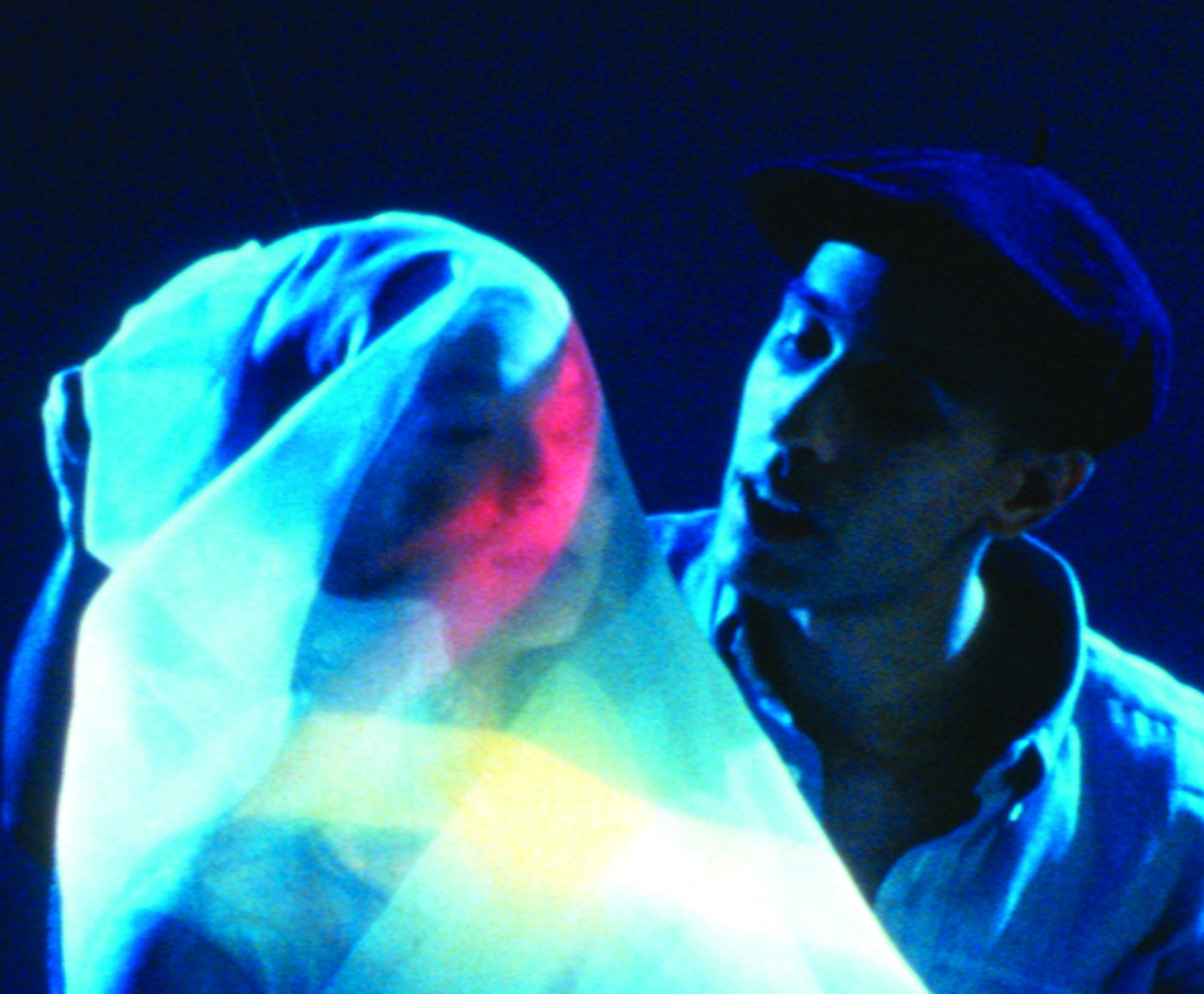
6 Still from A Tale of Love by Trinh T. Minh-ha and Jean-Paul Bourdier, Courtesy Moongift Films.
Lippit
The fantasy of a spontaneous gesture does suggest the emergence of an authentic or genuine self: A truer self that escapes in the inattention of spontaneity. Another feature that I find striking in your work is the adamant tension between images but also the sounds that are sometimes naturalistic and at others synthetic, artificial, and staged. Sounds are often broken, just when one is ready to be drawn into their flow. And one feels this at work in a variety of places, certainly I would say in Shoot for the Contents. During the interview with the Chinese filmmaker, for example, one recognises a very theatrical mise-en-scène – similarly in the interviews that constitute Surname Viet Given Name Nam. Do you see these tensions between naturalistic and synthetic representations as an element of your style, or do you see them as a dialectic that works between the notion of nature, naturalism, or things as they are, and the process of reflecting, commenting, filmmaking—“being nearby”?
Trinh
Neither one of those. Perhaps if I can find a way to say it on my own terms, it would be to say that what is viewed as being natural on the one hand and staged on the other belongs to a whole process. If one looks at the image in terms of representation, then I’m not simply representing “substance,” but I’m actually bringing out what one can call “function” or “condition.” In Shoot for the Contents, the image is mediated by the translator—a literal translator during the interview with the Chinese filmmaker, but also other translators heard or seen through the voices of the narrators and of myself as writer, editor and photographer of images of China. The fact that both makers and viewers depend here on translation in order to have an “entry” into the culture was clearly brought out in the sound-image. On one level, this interdependence made visible and audible may appear artificial, but on the level of its function within the process of producing meaning and images, it is totally natural.
This “natural” process is precisely what has been widely suppressed in films that try to get at “substance” while forgetting the importance of function and field in the mediation of reality on film. As the Indian philosopher Coomaraswamy said, one cannot imitate nature; one can only operate the way nature operates. When one thinks in those terms, the two currents you mentioned (one naturalistic, the other synthetic) are one and the same. To call attention to the subjectivity at work and to show the activity of production in the production is to deal with film in its most natural, realistic and truthful aspect. So I don’t see the separation. This largely applies to my first four films; with A Tale of Love, where everything was thought out down to the smallest detail, the situation is different. Ultimately, despite the contrasting way with which this last film fractures conventions of genre and of narrativity—or of psychological realism in acting and in consuming—its direction expands the one adopted by the previous films.
Lippit
In A Tale of Love, I was struck by, among other things, your use of colours and filters, which reminded me of the beginning of Naked Spaces, where you use a very saturated, seemingly tinted image. It creates a disorienting space because the colours and textures are so vibrant and voluptuous throughout the film that one begins to distrust one’s own senses. One can no longer tell what the so-called real colours of a scene are and those colours begin to infuse more than just the image, but all of one’s perceptions, projections, fantasies. It produces a kind of hybrid space, fantastic and actual. This colouring also seems to operate in A Tale of Love, which replays a previous tale, The Tale of Kieu, not as a historical citation, but as something that forms a hybrid text between a historical document and one’s interpretations of it. You make this clear in the film and in an encounter I saw you have with a member of the audience at a screening of A Tale of Love. She was an older Vietnamese woman who insisted that A Tale of Love was very different from the text she had studied in school. It seemed to be a perfect response to the film precisely because you suggest that there are always these hybrids that are forming between an external space grounded in reality and one’s encounter with it, which immediately creates some sort of space in between. Could you talk about your own motivation in A Tale of Love and the kind of interest that drew you to that project?
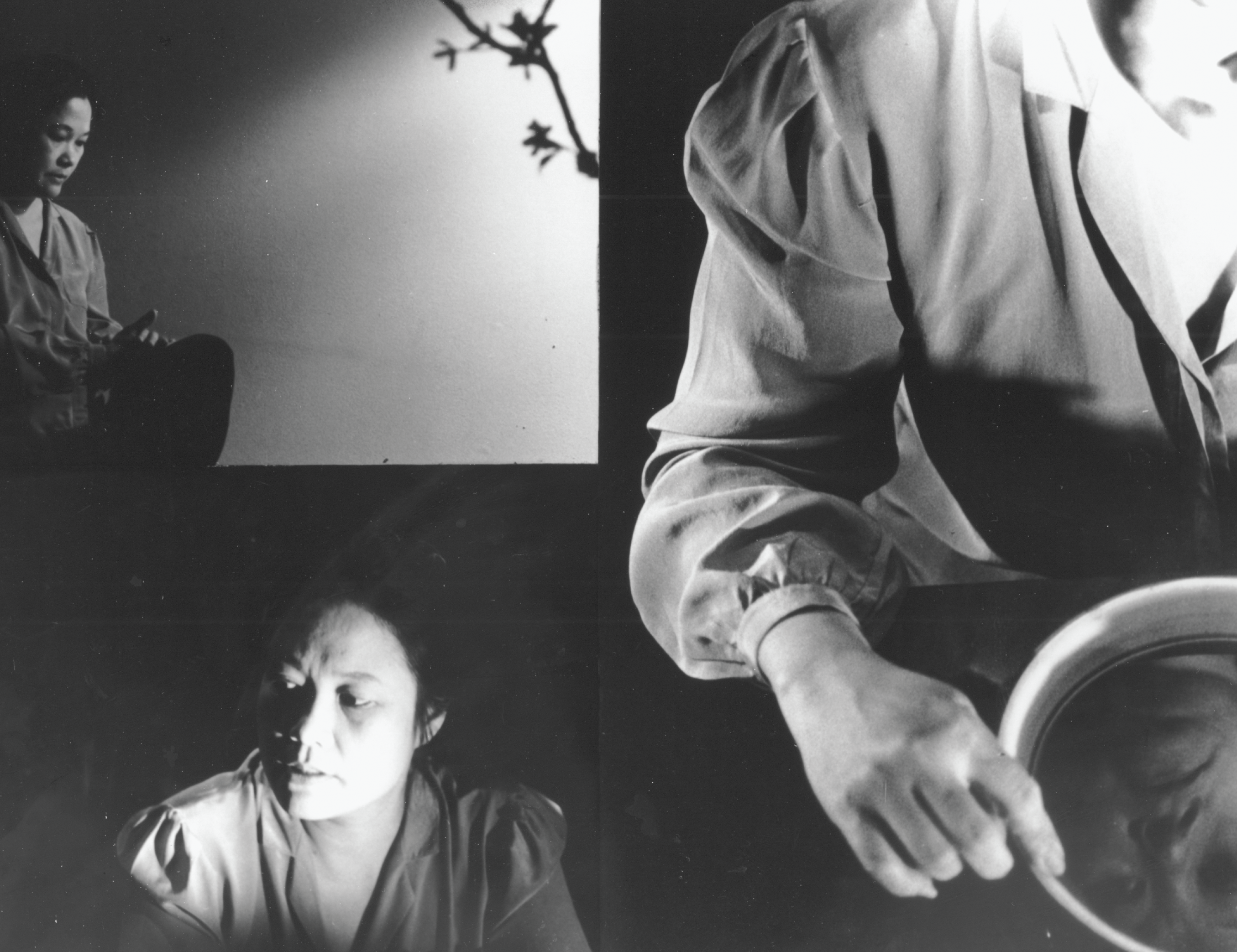
7 Still from Surname Viet Given Name Nam by Trinh T. Minh-ha, Courtesy Moongift Films.
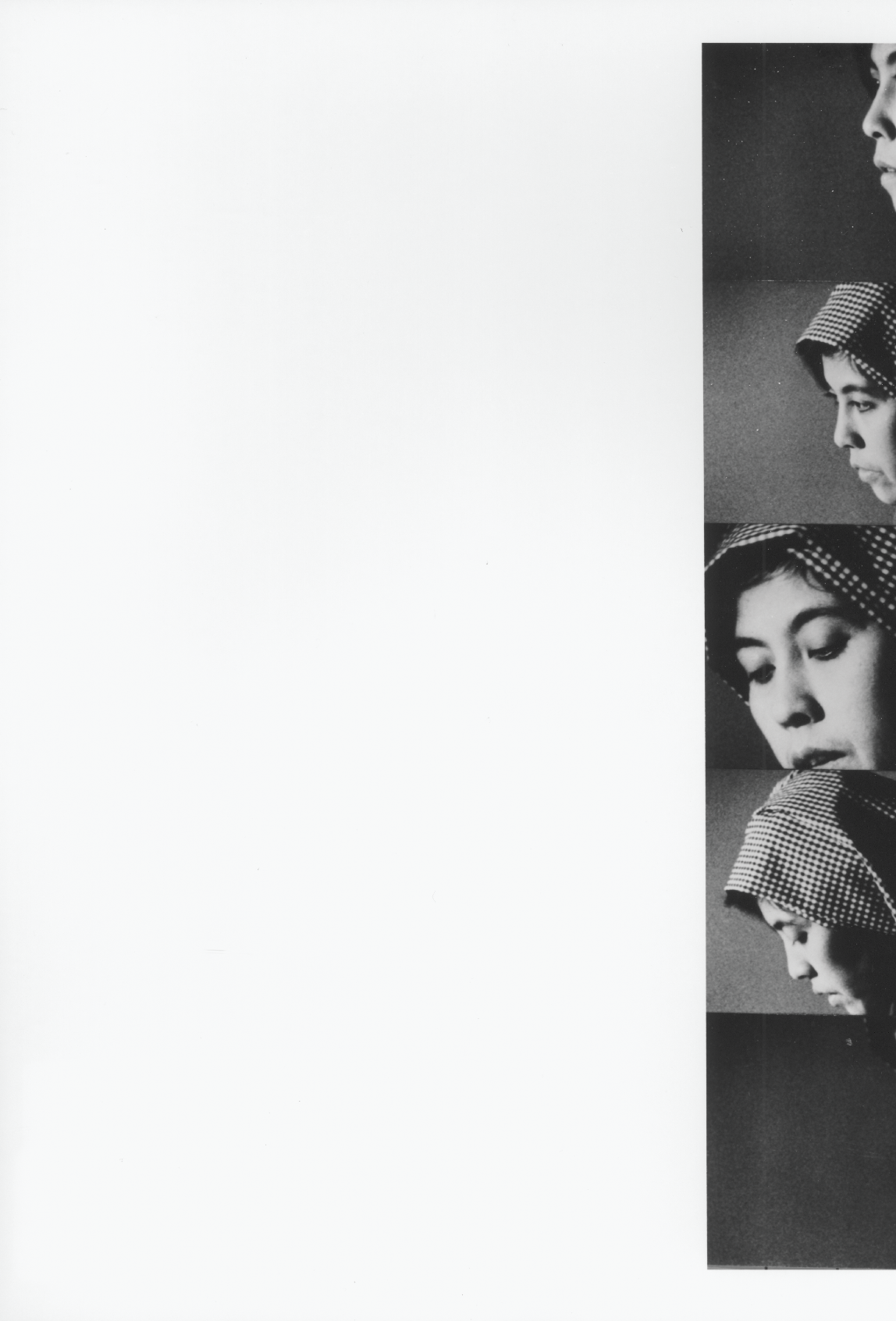
8 Still from Surname Viet Given Name Nam by Trinh T. Minh-ha, Courtesy Moongift Films.
Trinh
There are actually two things in your response that I would love to discuss. First, I find it very interesting that you link the two films through colour. Second, I would come back to the twist you’ve brought out, which turns the Vietnamese woman’s negative response into an accurate response for the space created. Other members of the Vietnamese community who have seen the film have also given a number of very interesting reactions. For example, the epigraph seen on screen at the beginning of the film is a quotation of the ending lines of the 3254-verse poem. So “Why begin with the ending?” some asked and added, “Not only that, but afterwards, you enter the poem in such diverse places that it throws us off and we are confused.” One man told me, however, that because of these decisive cuts into the different parts of the poem, he saw through the film, the space between makers and characters. This was wonderful for me, even though he didn’t mean it in a positive way and was telling me about this undesirable split in which “your character is timorous and undecided but you are a very tough person.”
In the context of patriarchal Vietnamese culture, this was no praise at all. But then I was very curious and I asked more specifically why he thought so. He said the way I edited the film was such that every time he started settling in with a recognisable thread of the poem, the cuts again and again jerked him out of the story space. He saw in the edits what one can call the split of voices, which is an interesting reaction when compared to the tendency among Western audiences to identify the filmmaker with the main character. The question asked often revolves around whether the film tells of a personal experience. “Does this come from your personal life?” It makes things very difficult because certainly, I would have been totally unable to make a film if it hadn’t engaged me strongly in a personal way, but this has little to do with one’s own particular life. It would be of no interest if filmmaking and filmviewing merely invited identification rather than offered an encounter with what is larger than one’s individual self—that is, with one’s own spaciousness.
To come back to the question of colour, the tinted effect of that very first sequence of images in Naked Spaces actually comes from a rather “natural” process. The Kodak film stock we carried with much care with us over a period of nine months of travel across West Africa was, in general, quite reliable. But perhaps the heat played a role here, because amidst all this footage of accurate colours, we suddenly found two rolls that came out all red. When I called the lab to ask what had happened, nobody understood why it had come out that red—because it could have turned out slightly tinted, brownish or partly reddish, which is the usual case with older film stock. I was actually quite happy with the look, and since I didn’t cause this effect on purpose, I immediately saw it as part of this solicited “otherness” in filming.
Trinh
One of the film’s foci was the wall paintings of African dwellings, whose colours change with our perception and with the shift of light through the day. Light and darkness also structure people’s living spaces and influence women’s daily activities. There is a whole network of relationships built up in Naked Spaces between film, music, architecture, and social life through elements such as light, colour and sound. So the red incidentally caused by the heat appears as a natural process that easily finds its place in the main threads of the film. But by opening the film with this red sequence, I‘m also using the colour as a marker to invite the viewer to come into the film differently—with a light that can pull you far in, as differentiated from the green that pulls you out in the subsequent images; and a light by which you are projected into another state of mind even while you look at things “as they are.” When you encounter colours in such a state, as you so nicely put it, the dualism of inside and outside loses its pertinence; you are no longer so sure of how colours come to you, from in here or from out there. This is also how I see those houses: as you stay with a space and try to shoot it at different times of the day, you can see how light and colours are shifting in ways that open onto an inner landscape unseen by your daily purblind eyes.
In A Tale of Love, the question of colour is almost the opposite: you create it as an explicit part of lighting. Since we had to plan out all the details in a “narrative film,” with a large crew shooting from a script, we were dealing with a very constraining space. How is one to conceive of lighting when it is not simply used to fill in a space, to make things legible, to hierarchise and to dramatise according to psychological realism? By visualising it, for example, in terms not only of projection but also of absorption. The move here is to experience light as it is formed by the differing qualities of darkness and by the receptive properties of things (texture, tone, movement, reflective potential) in relation to their surrounding. Here, colour (as an attribute of life in Naked Spaces) comes in as one of the ways by which light itself takes shape. Just as the primary colours featured in the film stand on their own in a challenging relationship of multiplicity (rather than of complementarity), many of the lights that cross the frame have a distinct shape and colour of their own. We might say then, to use a term we discussed earlier, that this space in A Tale of Love is saturated with artificiality, which is fine with me because it’s what the making of a film with a script should acknowledge—a space carefully fabricated, if not entirely fabulated. But again, “artificial” is not opposed to “real” or “true,” for to materialise a reality, one has to resort to the “non-true,” and it is finally through the fictional—be it image or word—that truth is addressed.
Lippit
The story of colour in Naked Spaces is quite fascinating. It is as if the place, or the process, as heat had pressed itself onto the film directly, created a tactile trace of having been touched—a fortuitous disaster it seems. In a similar vein, I know you have discussed in the past your relationship to the interval, to uses of silence, or a variation of silence, speechlessness, which comes up as a motif in a number of your works. I am interested in not only the intervals of sound or silence that appear on your soundtracks, but the ways in which one feels those intervals or silences even when there is sound. Which is to say that the exploration of intervals or silence in your work seems to be at such a sophisticated level that it occurs even when it isn’t, strictly speaking, a moment of silence or pause, or some interruption of the sound. I was wondering if you could situate your interest in the concept of silence, and how it works in relation to your work, which is also very discursive too.
Trinh
When I discuss my work with an audience, what I generate from their reception of the film is something different from the film. I can’t tell them what “the film is all about” (which is what film reviewers often claim to do), for I do not wish to imitate what the film is doing. Rather, what I try to give to the audience is yet another space with the film. Very often discussants tend to confuse this discursive verbal space with the film and say, “it’s so complex, how can people who haven’t heard you understand the film?” But film and discussion are two different realities. Aside from the fact that you can’t assume that nobody understands because you don’t understand, “understanding” also cannot account for the whole of film experience; it is only one among the many other possible activities of reception. Once, in a public discussion of my work, a viewer made a very complicated and long-winded remark that ended disapprovingly with this statement: “Art should be simple.” And I agree. Even when the opinion comes from someone who can’t be simple in his response. Simplicity has always been a big challenge for artists. But the simplicity of a film has little to do with the complex responses it can generate. The simplest work tends to yield the widest range of readings and of critical thinking. Simplicity and complexity, as it is stated several times in Naked Spaces, really go together.
Similarly, silence expresses itself in many ways and can be said to be a whole language of its own. Sometimes speaking is a way of keeping silence and being silent is an effective way of speaking. This is often the case in repressed political contexts, such as for example the case of the calligrapher who appeared on screen towards the end of Shoot for the Contents, and whose answer to the question, “Why did you move from Shanghai?” was so clearly a form of silence, that I decided the best way to translate it, was not to translate. This moment of non-translation in a film that directly addresses the issue of translation has raised questions among a lot of people.
As you said, silence can be a moment when you don’t hear sound and this can be radically disturbing when taken literally. In film, silence usually means filling the soundtrack with discreet environmental sound like birds singing or water lapping, or else with what is technically called “room tone.” In Reassemblage I actually cut off all sound from time to time, creating this dreadful phenomenon for filmmakers known as sound holes. A very perceptive viewer told me that when he saw Reassemblage, because of the way that the soundtrack was cut off, he suddenly had glimpses of a spectral reality that addressed him directly. He said that it was an experience of death irrupting between images and in a way, he’s an ideal viewer for that film. Rather than simply equating a sound hole with a technical mistake, one can ask what effect this has on the viewer, what reality is brought about? The reality of something we call death, or among others, the reality of the room in which the film is showing—the snoring of the audience, the squeaking of seats, the noise of the projector or the pulsation of one’s own body, as Cage musically experienced it.
It’s very difficult to simply talk about silence as a homogeneous phenomenon. As you’ve noticed, even when there’s sound or a lot of talking, you can still feel that interval. I really appreciate that, because, unlike with the films shot in Africa, Surname Viet Given Name Nam, Shoot for the Contents and A Tale of Love feature language in its excess as it outdoes the will to speak and to mean. There are also moments when words become nonsense, which is another aspect of language that I often work with humorously. After so much speech, you come to a state where opposites really meet. You may say or hear one thing but you’re supposed to mean or to understand exactly the opposite, which was the case with such terms as left and right, right and wrong, as related to China’s politics. But that’s the nature of language. When one pushes it far enough, words start to mingle, they are no longer opposites and the more one goes into it, the more one sees how these words used excessively can also silently open up a critical space.
Lippit
What I find especially liberating in your films is the way in which you track the movement of language from a place to its destination. And frequently, it doesn’t arrive at its destination, which is a much more compelling way of thinking about language, communication, all of the complexities of its transmission, and translation. That non-arrival, or missed arrival seems much more provocative and much more familiar, even, as an experience than the shot/reverse-shot convention in which movie conversations are usually sent and received. In another interview, you relate the experience of a translator running up to you frantically and saying “But there are two voices here, which one do we translate?” The fact that things are lost or miscommunicated or fail to arrive at their destinations is hardly frustrating, but actually a relief to see in film, because it really begins to address the circuitry of language. It seems that in your films the interview is never a stable phenomenon, even from film to film, but something that is addressed and created as a space each time anew, never occurring in the same way. Each space seems to be driven or motivated by the particularities of that space and your relationship to it.
Trinh
If people thought about language in the way you just described it, then my films are very simple. It’s the same with my books. I do hear from a number of academics that my books are very difficult. And I don’t deny this. On the other hand, I’ve also met people who left school at the age of fifteen or who have no training for theoretical thought. They come across these books by accident and they can’t read many pages in one go, but they have no concern for that, they just steadily read a few pages at a time and say it’s incredible, because they feel a lot of affinity with the process of my thought and can follow it so well. If one simply observes how language operates—creating all these circuits within itself, as you said—and how it works on us constantly, then these films are very easy to “understand.”
When an interview is dense and intense, as in the case of those in Surname Viet Given Name Nam, then even in moments when one is not in front of the interviewee, the conversation continues, not in one voice, but sometimes in several voices, or in fragments that come and go and get superimposed on one another. There’s nothing difficult in the film when one thinks inclusively in terms of what language does to us—how it speaks us as we speak it—rather than exclusively in terms of ourselves as the ones who manipulate language. Any one of those instances that may irritate the viewer by its so-called incomprehensibility is for me as clear as a river. They happen all the time in our daily reality with language.
Regarding the anecdote about which voice to translate when there are several simultaneous voices, I was amazed by the Japanese solution. Actually, with Japanese characters, that problem did not even arise; my distributor at Image Forum simply decided to have one voice subtitled vertically, the other, horizontally. Not only do calligraphic characters destroy the image much less, but you also have this flexibility of going vertical or horizontal.
Lippit
When A Tale of Love was about to be released there was a small fervor that Trinh T. Minh-ha had made a narrative film, and there was something of a scent of scandal about the whole thing. When I heard this rumour, I was little surprised because it is not as if your previous films could be classified as strictly non-narrative work either. They had elements or traces of things that one might call documentary, for example, or experimental or art film, or music film. And then when I saw A Tale of Love I was reassured that this wasn’t a narrative in the way that people seemed to be disparaging the term either. Certainly it was a narrative and it engaged aspects of narrative. But it was also done in 35mm. Could you talk about your decision to work with this format and this narrative structure? What prompted you to explore this particular set of elements?
Trinh
It’s just like with the colour red discussed earlier in Naked Spaces. The decision was bound to circumstances. I didn’t have the budget to shoot a “feature narrative film,” not even a budget for 16 mm. So in a desperate move, the line producer called everywhere searching for donations. Panavision donated the camera equipment in 35mm for the whole shoot, rather than in 16mm as we had asked, which was such an incredible thing. But I paid dearly for that, because I got stuck after the film was finished. The final edited version was completed in 1995 but I had to wait until 1996 before the film could be released in an acceptable form because there was no money left to make a print.
Certainly, there’s also another decision that comes into play. And as you said, it’s not so much a question of narrative versus documentary, it’s more a question of exploring a different terrain of cinema. Since I’ve explored at length the terrain of, let’s say, information and truth, I wanted to explore this other terrain which is that of the lie and its truth in love stories. I wanted to see what happens when you deal with something as commonly consumed in our society as the love story. But as you can see, despite the difference in realisation, the direction explored is similar to the one taken in the previous films.
Lippit
In each of your films, one senses the particularity of a place and a space that seems to orient the film. One feels that the space is dictating or directing the movements of the film, a mixing of geography and fantasy, experience and projection. Knowing that you have spent some time in Japan recently, and that you are also working on a new project, I was wondering if you could talk about your new project and also about your sense of Japanese space?
Trinh
It’s difficult to talk about a visual space before you get a chance to see it realised on film or video. I’ve just only started work on it, but let’s say that after having been to Japan, I think, five times, my experience of the culture during this last four-month stay, which was the longest stay, has changed quite a bit. It was a thoroughly demystifying experience, although not in a negative sense. You just have a reality that is differently nuanced, less romantic, but also less exotically other.
As with many foreigners, I am drawn to the spiritually ritualised aspects of Japanese life and art. The integrated dimension of aesthetics and ethics has been quite striking in a number of Japanese works, for example. I am very attracted to shooting in Japan partly because of its architectural landscape, which really favours the graphic line and the mobility of sliding frames. Here, the line between outside and inside is always shifting. It seems as if everything—from the art of building houses to the way the railroad network functions, or the way dance and music structure theatrical performances and festival parades—partakes in a system whose organisation is largely based on micro-structures or on prefabricated cells (the melodic, the rhythmic, the action-propelling and the structure-bearing cells in a parade, for example). There’s also a striking encounter between light, colour, and graphics in the scenography of life and stage events that I would love to work with. But as always, I have to remain very flexible as to what I can do, since I don’t work with unlimited finances and everything still depends very much on that. I have to take into consideration the fact that maybe I will not be able to get permission for the locations where I would love to shoot, such as in temples, since the next film is very much related to a spiritual quest.
At the end of this millennium the notion of spirituality may continue to raise skepticism because what is spiritual is often identified, at least in the modern world, with mystification and institutionalized religion. A return to the traditions of old is also to be rejected as long as these are viewed only through activities of retrieval and of imitation rather than of creation in the present. This, I think, is the very problem we face today, both in the modern East and in the West, with our inability to see the spiritual in any other way than smugly and narrow-mindedly, as a form of parasitical occultism and of transcendentalism. The situations with Tibet or with Islam are glaring examples. As a spiritual force that gathers people across geographies and nations, Islam certainly stands, despite all controversies, as the one visible power that continues to challenge the West at the end of the millenium. It is necessary in these times to look at spirituality in a different way. And certainly, Japan has had a strong tradition of writers and filmmakers who have struggled with this dimension of life, from which I also draw inspiration.
Lippit
These glimpses are very intriguing. The quest for a spiritual existence or identity, a rethinking of spirituality, should be of interest to late-capitalist Japan as well. Thank you very much.
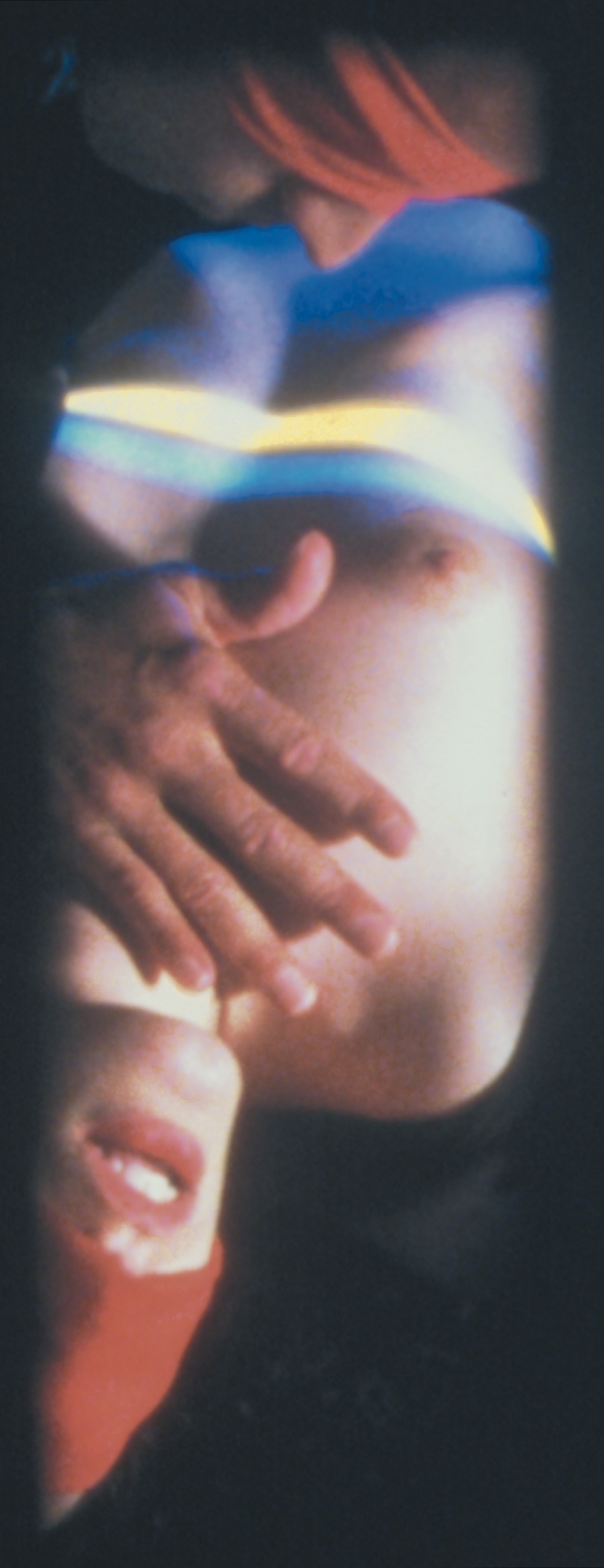
9 Still from A Tale of Love by Trinh T. Minh-ha and Jean-Paul Bourdier, Courtesy Moongift Films.
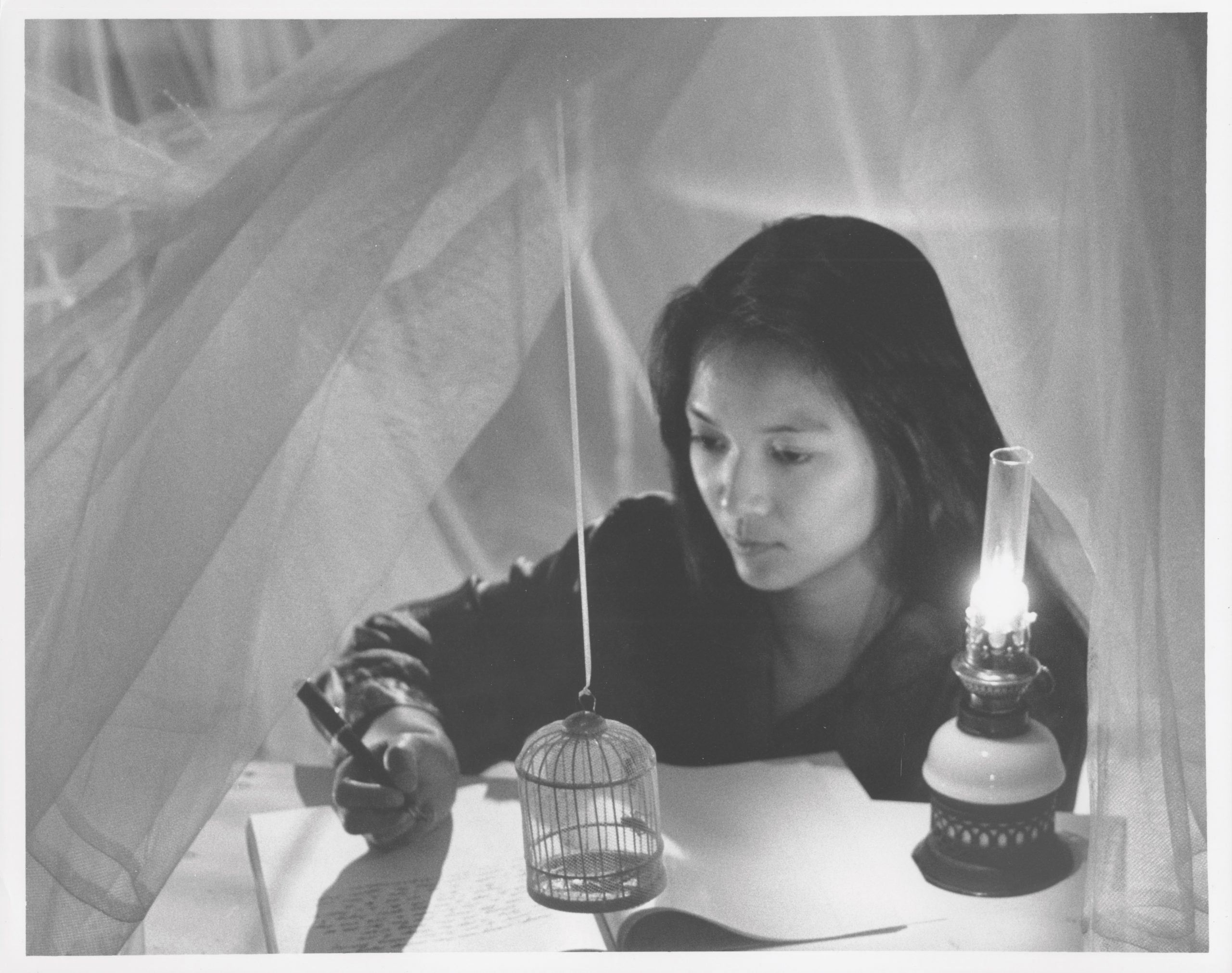
10 Still from A Tale of Love by Trinh T. Minh-ha and Jean-Paul Bourdier, Courtesy Moongift Films.
11 Still from A Tale of Love by Trinh T. Minh-ha and Jean-Paul Bourdier, Courtesy Moongift Films.

